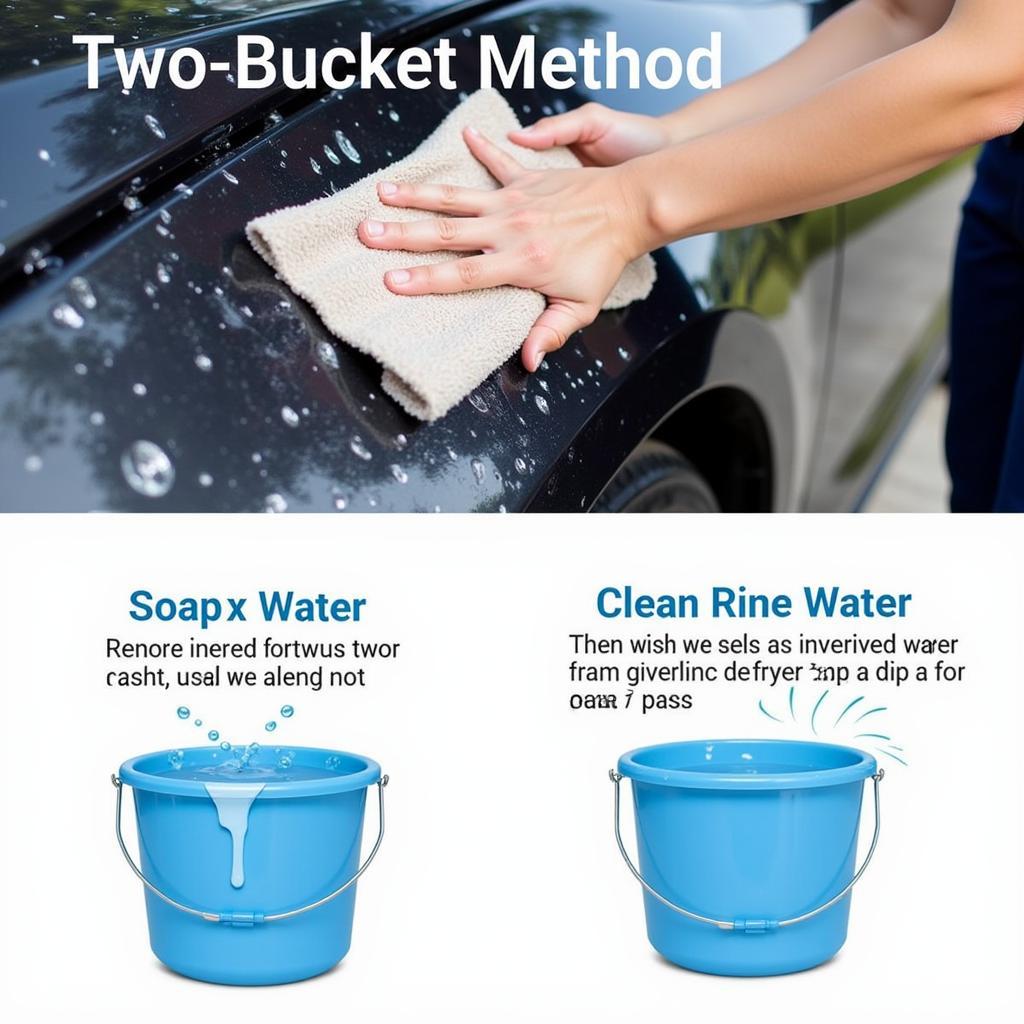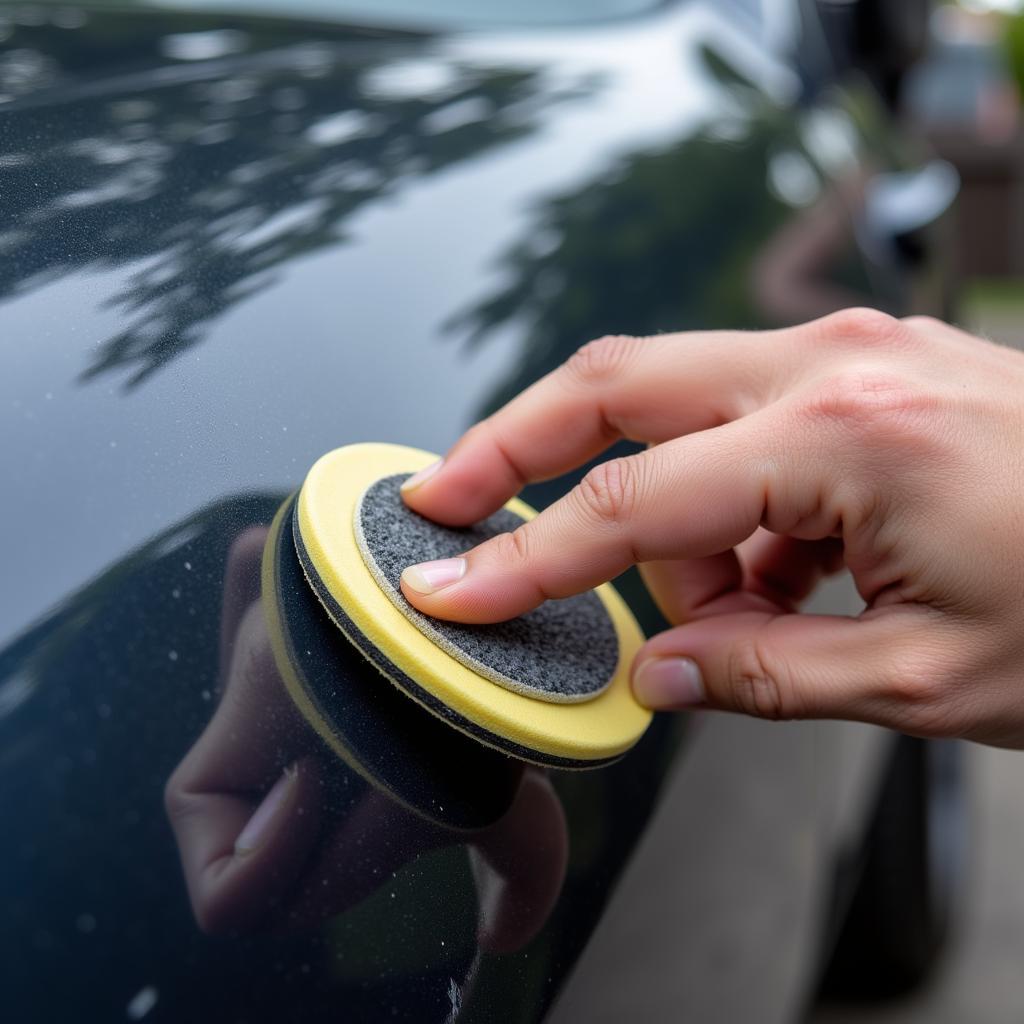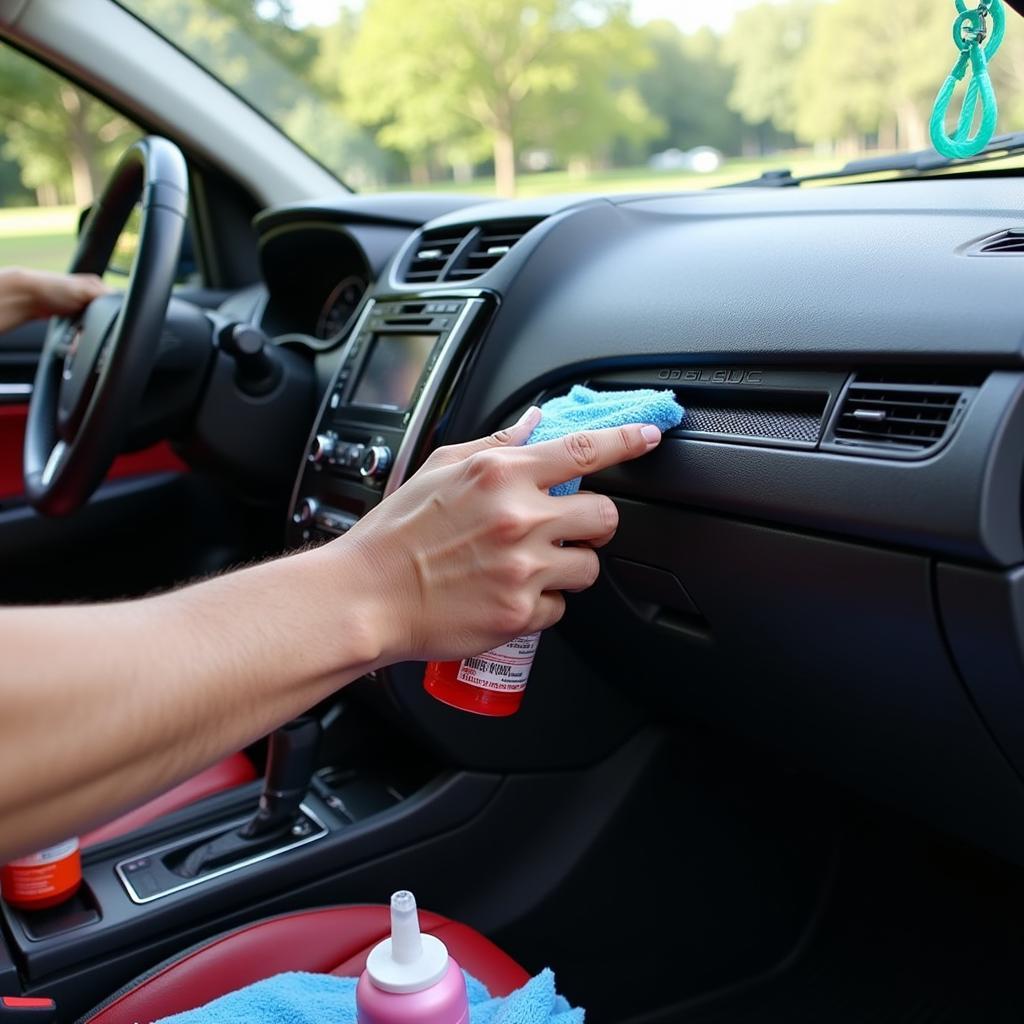Detailing a car goes far beyond a simple wash and wax. It’s a meticulous process that restores and enhances a vehicle’s appearance, inside and out, to a like-new condition. Learning How To Detail Cars Professional involves understanding the right techniques, using the correct products, and having a keen eye for detail. This comprehensive guide will provide you with the knowledge and steps necessary to achieve professional-level car detailing results. Want to know how much it costs to have your car professionally detailed? Check out our guide on how much does it cost to have my car detailed.
Car detailing is a multi-stage process, and the order of operations is crucial for achieving optimal results. Skipping steps or using incorrect techniques can lead to subpar results and even damage the vehicle’s finish. Understanding the purpose of each step and how they build upon each other is essential for professional detailing. Should a new car be detailed? Find out in our dedicated article.
The Essential Steps for Professional Car Detailing
Washing and Drying
This initial stage is about more than just removing dirt. It’s about preparing the car’s surface for the subsequent detailing steps. A pre-wash solution helps loosen stubborn dirt and grime, minimizing the risk of scratching during the wash process. Using the two-bucket method, one with soapy water and the other with clean rinse water, helps prevent swirl marks. Drying with a high-quality microfiber towel minimizes water spots.
 Professional Car Wash Using Two-Bucket Method
Professional Car Wash Using Two-Bucket Method
Paint Correction
This stage involves removing imperfections from the car’s paint, such as swirl marks, scratches, and oxidation. Depending on the severity of the imperfections, this may involve clay barring, compounding, polishing, and even wet sanding. Clay barring removes embedded contaminants, while compounding removes deeper scratches. Polishing refines the paint and removes finer scratches, leaving a smooth, glossy finish.
Knowing when and how to use these techniques requires practice and expertise. For instance, using too aggressive a compound can damage the clear coat. Choosing the right polishing pad is also critical for achieving the desired result. You can find more information on the cost of car detailing in our guide on how much to get car detailed near me.
Protecting the Paint
Once the paint is corrected, it’s vital to protect it from the elements. This usually involves applying a sealant or wax. Sealants provide long-lasting protection against UV rays, environmental contaminants, and water spots. Waxes, while offering a deeper shine, typically don’t last as long as sealants. Ceramic coatings are another option, providing even greater durability and protection.
 Applying Car Paint Sealant
Applying Car Paint Sealant
Interior Detailing
Detailing the interior involves thoroughly cleaning and conditioning all surfaces. This includes vacuuming, shampooing carpets and upholstery, cleaning and conditioning leather, and cleaning and protecting all plastic and vinyl surfaces. Steam cleaning is particularly effective for removing deeply embedded dirt and stains from carpets and upholstery.
Using the correct cleaning products for each surface is crucial to prevent damage. For example, using a harsh cleaner on leather can cause it to dry and crack. Wondering if detailing increases your car’s trade-in value? Check out our article on does detailing a car increase trade-in value.
Final Touches
The final touches are what truly separate a professional detail from a basic car wash. This involves cleaning the door jambs, dressing tires, and polishing exterior trim. Paying attention to these small details gives the car a truly polished and professional look. Will a car detail remove dents? Find out in our article addressing that very question.
 Car Interior Detailing Process
Car Interior Detailing Process
Expert Insights
“A common mistake is using the same microfiber towel for different surfaces. This can transfer contaminants and scratch the paint. Always use dedicated towels for each stage of the detailing process,” says renowned detailing expert, James Peterson, Certified Detailing Professional.
“Investing in quality products and tools is crucial for achieving professional results. Cheap products can often do more harm than good,” adds Sarah Miller, Master Detailer and Founder of Pristine Auto Detailing.
Conclusion
Learning how to detail cars professional requires patience, practice, and a dedication to perfection. By following the steps outlined in this guide and using the right products and techniques, you can achieve stunning results and keep your car looking its best. Remember, car detailing is an investment that protects your vehicle’s value and enhances your driving experience.
FAQs
- How often should I detail my car? Ideally, every 3-6 months, depending on usage and environmental conditions.
- What’s the difference between detailing and washing? Detailing is a comprehensive cleaning and restoration process, while washing is simply removing surface dirt.
- Do I need special tools for car detailing? Yes, investing in quality tools, such as microfiber towels, wash mitts, and applicators, is essential.
- Can I detail my car myself? Absolutely! This guide provides the steps and knowledge you need to detail your car like a pro.
- How long does car detailing take? Depending on the level of detail, it can take anywhere from a few hours to a full day.
- Is car detailing worth the cost? Yes, it protects your car’s paint, enhances its appearance, and can even increase its resale value.
- What is the best car detailing product? The best products depend on your car’s specific needs and the level of detail you’re aiming for.
Need assistance? Contact us via WhatsApp: +1(641)206-8880, or Email: [email protected]. Our customer service team is available 24/7. You can also explore further articles on our website, such as how much does it cost to have my car detailed and should a new car be detailed.

Leave a Reply